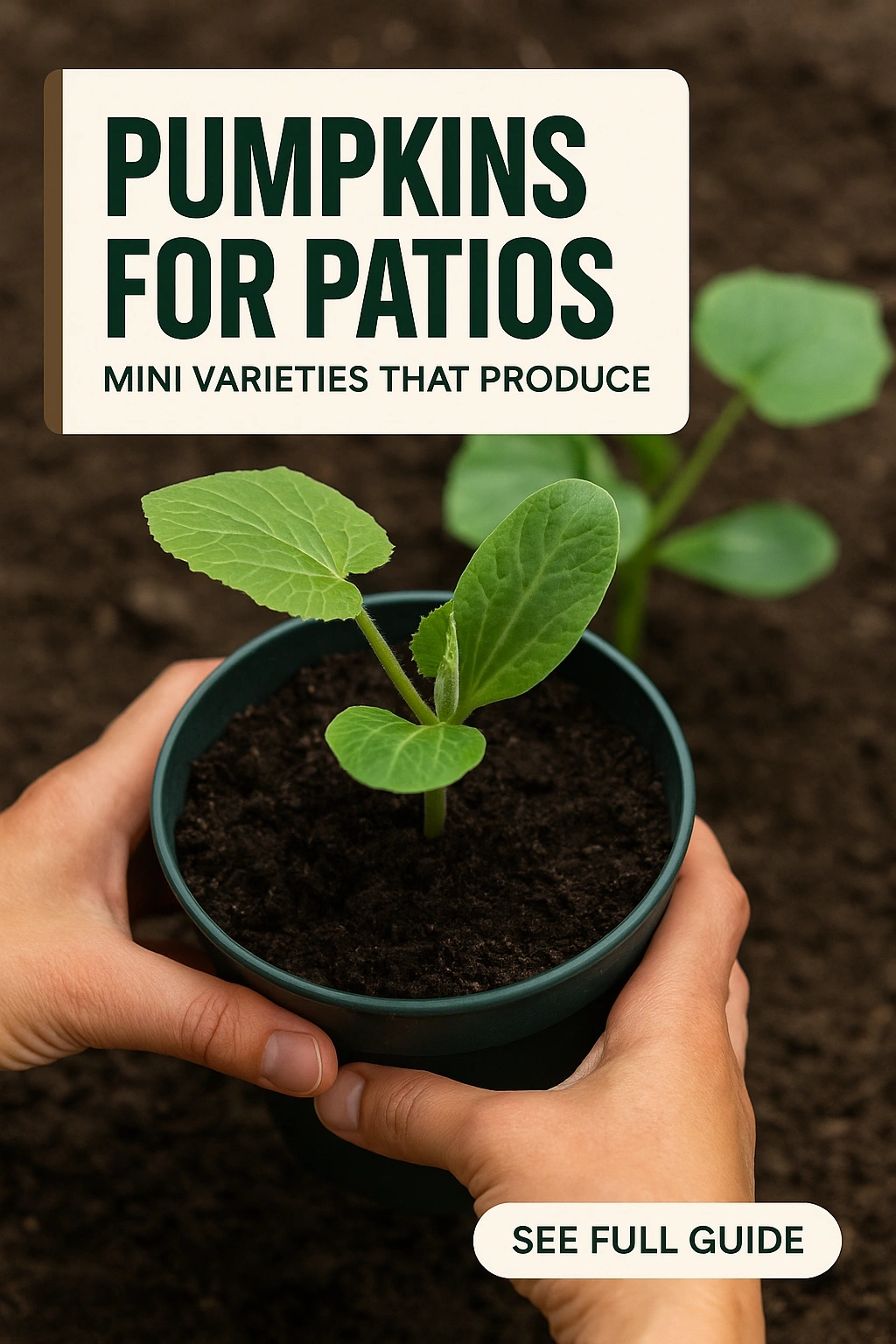
Transform your patio into a vibrant harvest space with mini pumpkin varieties that are not only charming but also highly productive. Discover how to cultivate these delightful plants, ideal for small spaces, and bring a touch of autumn to your home. With the right choices and care, your patio can become a showcase of beauty and bounty.
Understanding Mini Pumpkin Varieties
Mini pumpkins are perfect for small gardens or patios due to their compact size and impressive yield. Typically, these varieties grow on vines that can be trained to climb or spread, making them adaptable to various container sizes. Their small stature does not compromise their ability to produce fruit, allowing you to enjoy the beauty of pumpkins even in limited spaces.
Choosing the Right Mini Pumpkin Varieties
When selecting mini pumpkins for your patio, consider factors such as growth habit, color, and intended use. Various mini pumpkin varieties excel in container gardening, offering unique characteristics that can enhance your gardening experience.
Popular Mini Pumpkin Varieties
- Jack Be Little: These iconic mini pumpkins are about 2-3 inches in diameter and are perfect for decorating. Their sweet flavor also makes them suitable for small dishes.
- Baby Boo: Known for their white skin, Baby Boo pumpkins are not only visually appealing but also have a great taste. They grow to about 4 inches in diameter.
- Mini Harvest: This variety produces tiny, bright orange pumpkins that are ideal for both decoration and cooking. They typically reach about 3-4 inches in size.
- Sweet Dumpling: These are an excellent choice for eating, with sweet, creamy flesh and a striking green and white striped exterior. They are about the size of a small apple.
Container Gardening Tips for Mini Pumpkins
Container gardening is an effective way to grow mini pumpkins on your patio. Choosing the right pot, soil, and care regimen will ensure that your plants thrive and produce a bountiful harvest.
Selecting the Right Container
Choose a container that is at least 5 gallons in size to accommodate the roots of your mini pumpkin plants. Ensure that it has adequate drainage holes to prevent waterlogging, which can lead to root rot. Materials such as plastic, clay, or fabric pots work well, but ensure they are sturdy enough to support the growing plant.
Soil Requirements
Mini pumpkins prefer well-draining, nutrient-rich soil. A potting mix that contains organic matter, such as compost or peat moss, can provide the necessary nutrients. Mix in some perlite or vermiculite to enhance drainage, ensuring your pumpkins have a healthy growing environment.
Care and Maintenance of Mini Pumpkins
Proper care is essential to ensure your mini pumpkins thrive. This includes watering, fertilization, and pest management. Each aspect plays a vital role in the overall health of your plants.
Watering Guidelines
Mini pumpkins require consistent moisture, especially during their growing season. Water deeply but infrequently, allowing the top inch of soil to dry out between waterings. This approach encourages deep root growth while preventing overwatering, which can be detrimental to the plants.
Fertilization Practices
Fertilizing your mini pumpkins will support vigorous growth and fruit production. Use a balanced, slow-release fertilizer at the beginning of the growing season. Consider supplementing with a liquid fertilizer every few weeks to provide additional nutrients as the plants mature.
Harvesting Your Mini Pumpkins
Knowing when and how to harvest your mini pumpkins is crucial for maximizing their flavor and appearance. Harvesting at the right time ensures you enjoy the best taste and texture.
Signs of Ripeness
Mini pumpkins are typically ready to harvest when they have fully developed color and a hard skin. For most varieties, this occurs about 90-100 days after planting. A gentle press on the skin should yield resistance, indicating that they are ripe. Cut the stem to harvest, leaving a few inches attached to the pumpkin.
Decorating and Using Mini Pumpkins
Mini pumpkins serve a dual purpose as both decorative items and culinary ingredients. Their versatility allows for creative uses in your home and kitchen.
Creative Decoration Ideas
- Use mini pumpkins as table centerpieces during fall gatherings.
- Arrange them in baskets or on mantels for a seasonal touch.
- Paint or craft them for personalized decorations.
Culinary Uses
Many mini pumpkin varieties are edible and can be used in various dishes. They can be roasted, pureed for soups, or incorporated into baked goods. Their smaller size makes them ideal for individual servings or as ingredients in recipes where pumpkin flavor is desired.
FAQs
Can mini pumpkins grow in small containers?
Yes, mini pumpkins are well-suited for small containers as long as the pots are at least 5 gallons in size and provide adequate drainage. They can thrive in these environments with proper care.
How often should I water my mini pumpkin plants?
Water mini pumpkins deeply but infrequently, allowing the top inch of soil to dry out between waterings. This helps promote deep root growth.
Are mini pumpkins edible?
Yes, many mini pumpkin varieties are edible and can be used in various culinary dishes. They are often sweet and flavorful, making them a great addition to meals.
When is the best time to harvest mini pumpkins?
Mini pumpkins are typically ready to harvest 90-100 days after planting. Look for fully developed color and a hard skin, and cut them with a few inches of stem attached.
What types of soil are best for growing mini pumpkins?
Mini pumpkins thrive in well-draining, nutrient-rich soil. A good potting mix with organic matter and some perlite or vermiculite for drainage is ideal.
By choosing the right mini pumpkin varieties and providing them with the necessary care, you can create a lush and productive patio garden. Enjoy the beauty and bounty these charming plants bring to your outdoor space.
